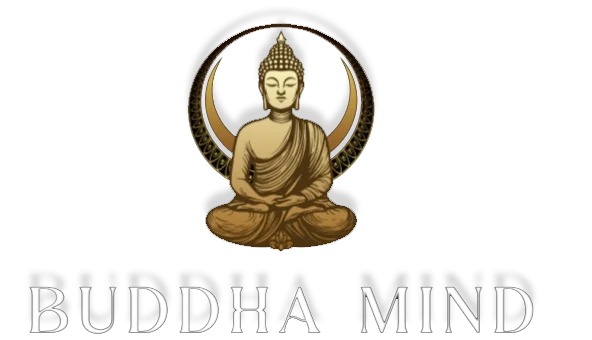Dhamma: The Living Law of Nature and Inner Harmony
Reclaiming the Lost Meaning of Dhamma

Over the last two millennia, the meaning of “Dhamma”—originally rooted in clarity and universality—has been diluted and obscured. Once understood as the law of nature or the inherent truth of existence, Dhamma is now often mistakenly equated with religious sects: Hindu Dhamma, Buddhist Dhamma, Christian Dhamma, and so on.
But Dhamma is not a label or ideology. It is not a cultural identity or a ritual. It is the nature of reality itself—unchanging, self-evident, and applicable to all beings regardless of belief or background. So when we ask “धम्म क्या है?” the answer cannot lie in religious categories, but must be sought in lived experience and observable truth.
The Nature of Dhamma — Not an Idea, But a Law
In ancient India, the word Dhamma (from Sanskrit “Dharma”) was understood as “dhāretīti dhammam”, or “that which is lived and upheld.” It referred to the natural characteristics of phenomena. Fire burns. Ice cools. These properties exist independently of belief.
Dhamma, in this original sense, meant the intrinsic behavior of things. The sages and seekers of old—Rishis, Saints, Arahants, Buddhas—observed the mind to understand what naturally arises within it. What they found was that defilements such as anger, envy, and pride always emerged with internal agitation. This wasn’t philosophy—it was observation.
Just as touching fire burns the skin, indulging in hatred burns the mind. This pattern is universal and unchanging.
Analogy of Heat and Cold: Inner Physics of the Mind
Imagine placing burning coals in a metal container. Before it heats its surroundings, it scorches the vessel itself. Similarly, when anger flares up, the first person to suffer is the one who harbors it.
Now replace the coals with ice. The container cools first, and then the environment. Likewise, the mental qualities of love, compassion, and joy bring immediate calm within and then spread outward.
This is not metaphorical but a psychological law of cause and effect, observable through introspection. The sages called this inseparable linkage sahajat—arising together.
Practical Dhamma: From Theory to Observation
While modern spirituality often relies on external forms—rituals, chants, or identity—the core of Dhamma invites us to look inward.
The ancient technique known as Vipassana, meaning “to see things as they are,” was designed to develop this inward awareness. The practice begins by observing the breath and gradually brings attention to mental reactions—what truly happens inside when anger or greed appears?
Those who practiced Vipassana discovered a profound truth: mental defilements always lead to suffering. The more one observes them, the more clearly this becomes.
Why Observation Matters More Than Philosophy
It’s not enough to intellectually agree that anger is harmful. A child learns not to touch fire through experience, not explanation. Similarly, wisdom comes not from books but from direct experience.
This is why Dhamma cannot be reduced to a belief or scripture. It is experiential. To truly follow it, one must feel the internal consequences of one’s thoughts and actions.
Social Rituals vs. Universal Dhamma

Rituals vary between cultures. Some wear white, others chant; some fast, others feast. These customs may have social value, but they are not Dhamma.
Why? Because they don’t necessarily reduce inner suffering. A person may follow dozens of rituals and still be consumed by anger and pride. As long as defilements increase, one is moving away from Dhamma, not toward it.
Comparing Ritual Practice and True Dhamma
| Aspect | Ritual-Based Practice | Dhamma-Based Practice |
|---|---|---|
| Focus | External behavior and symbols | Internal state and reaction patterns |
| Measure of progress | Strict ritual compliance | Reduction of anger, greed, and ignorance |
| Universality | Varies by religion and tradition | Same for all humans regardless of belief |
| Outcome | Cultural identity or social cohesion | Personal transformation and peace |
Morality, Concentration, and Wisdom: Three Pillars of Dhamma

The Buddha’s path outlines Dhamma in three inseparable parts: sīla (morality), samādhi (concentration), and paññā (wisdom).
Let’s briefly explore each:
1. Morality (Sīla)
Right action begins with refraining from harm. This includes not lying, stealing, or causing pain to others. It also involves the intention behind action—purity of mind is key.
As the Dhammapada says:
“If with an impure mind one speaks or acts, suffering follows like the wheel follows the ox.”
“If with a pure mind one speaks or acts, happiness follows like a shadow that never leaves.”
So, धम्म क्या है? At its foundation, it is moral living guided by mental awareness—not blind obedience, but mindful action.
2. Concentration (Samādhi)
To act wisely, one must first stabilize the mind. Without focus, ethical behavior collapses under pressure. That’s why meditation begins with breath awareness—simple, non-sectarian, and always available.
This allows the mind to observe without reacting, forming the base for deeper insight.
3. Wisdom (Paññā)
True wisdom isn’t borrowed. It must be seen directly. The ancient texts describe three types of knowledge:
- Heard Wisdom (Suta-mayī paññā): Based on listening
- Intellectual Wisdom (Cintā-mayī paññā): Based on reasoning
- Experiential Wisdom (Bhāvanā-mayī paññā): Based on direct observation
Only the third transforms behavior. This is where Dhamma becomes real—not as a belief, but as lived truth.
Experiencing Dhamma: Why Insight Must Be Lived
What separates Dhamma from religious ideology is its insistence on direct experience. You may attend hundreds of sermons or perform countless rituals, but until you observe your inner reality, the transformation remains superficial.
Ever experienced what’s called “cremation ground wisdom”? At a funeral, watching a body burn, one often reflects: “One day I will also die. So why am I clinging to pride, possessions, and anger?” But how long does that insight last? Moments later, back in daily life, the ego returns. This fleeting awareness doesn’t bring change because it wasn’t deeply internalized.
Real Dhamma works differently. It embeds itself not in memory, but in habitual reaction patterns—by watching them directly.
Levels of the Mind: Surface vs. Subconscious
Ancient texts speak of parita citta—the small, surface mind. It generates thoughts and emotions, but barely affects our core habits. It is in the subconscious mind, built from years or lifetimes of reactions, where real change must occur.
This is why external events instantly spark aversion or craving. Not because we choose it consciously, but because it’s automatic. Dhamma, through awareness and meditation, trains the deeper mind to respond rather than react.
And this training must come from within.
Self-Reliance in Dhamma: No One Can Purify You But You
One of the most profound teachings in Dhamma is personal responsibility. Liberation doesn’t come from deities, gurus, or mantras—it comes from seeing reality as it is.
Attā hi attano nātho — “One is one’s own master.”
When we ask धम्म क्या है, we’re not just seeking a philosophical answer—we’re being challenged to look within. You can’t outsource Dhamma. It’s a personal path, and the results depend entirely on your own observation and effort.
This doesn’t mean rejecting external traditions. It means not relying on them for inner change.
The True Meaning of Being “Selfish”
Interestingly, Dhamma teaches us to be “selfish”—but in a higher sense. Not by exploiting others, but by truly caring for our inner wellbeing.
A person who understands Dhamma knows: every defilement harms me first. Every act of kindness purifies me first. So the wise become “selfishly” committed to goodwill, compassion, and clarity.
This is a redefinition of self-interest: not short-term pleasure, but long-term peace.
Why Ritual Alone Cannot Save You
Many find comfort in rituals—chanting, ceremonies, festivals. These can calm the mind temporarily, but they don’t uproot suffering at its core.
Why? Because they don’t touch the subconscious level of craving and aversion. Only inner observation can do that. That’s why ancient seers, beyond reciting names of gods or counting beads, focused on breath and bodily sensation—the gateway to real awareness.
When the mind learns to watch these sensations without reacting, old patterns begin to dissolve. This is the engine of self-transformation in Dhamma.
The Law of Nature: Immediate Cause and Effect
Dhamma operates with precision. When you break a man-made law, the penalty may be delayed, or you may escape it entirely. But when you break the law of nature, suffering follows instantly.
Act with anger, and you burn immediately. Cultivate compassion, and peace arises—equally fast. Dhamma is impartial. It doesn’t care about your religion, caste, nationality, or beliefs. It only reflects your actions and mental state.
This universal law—rit—governs everything. Fire burns anyone who touches it. Ice cools whoever comes close. Dhamma, likewise, affects all.
The Turning Point for Humanity
The day we recognize Dhamma not as a sect or scripture, but as the science of mind, a new era in human evolution begins. We stop defining ourselves by rituals and start refining ourselves through awareness.
So again—धम्म क्या है?
Dhamma is:
- That which is lived and experienced, not believed
- That which reduces defilements and increases peace
- That which applies to all, equally and always
As this truth takes root, society transforms from the inside out.







